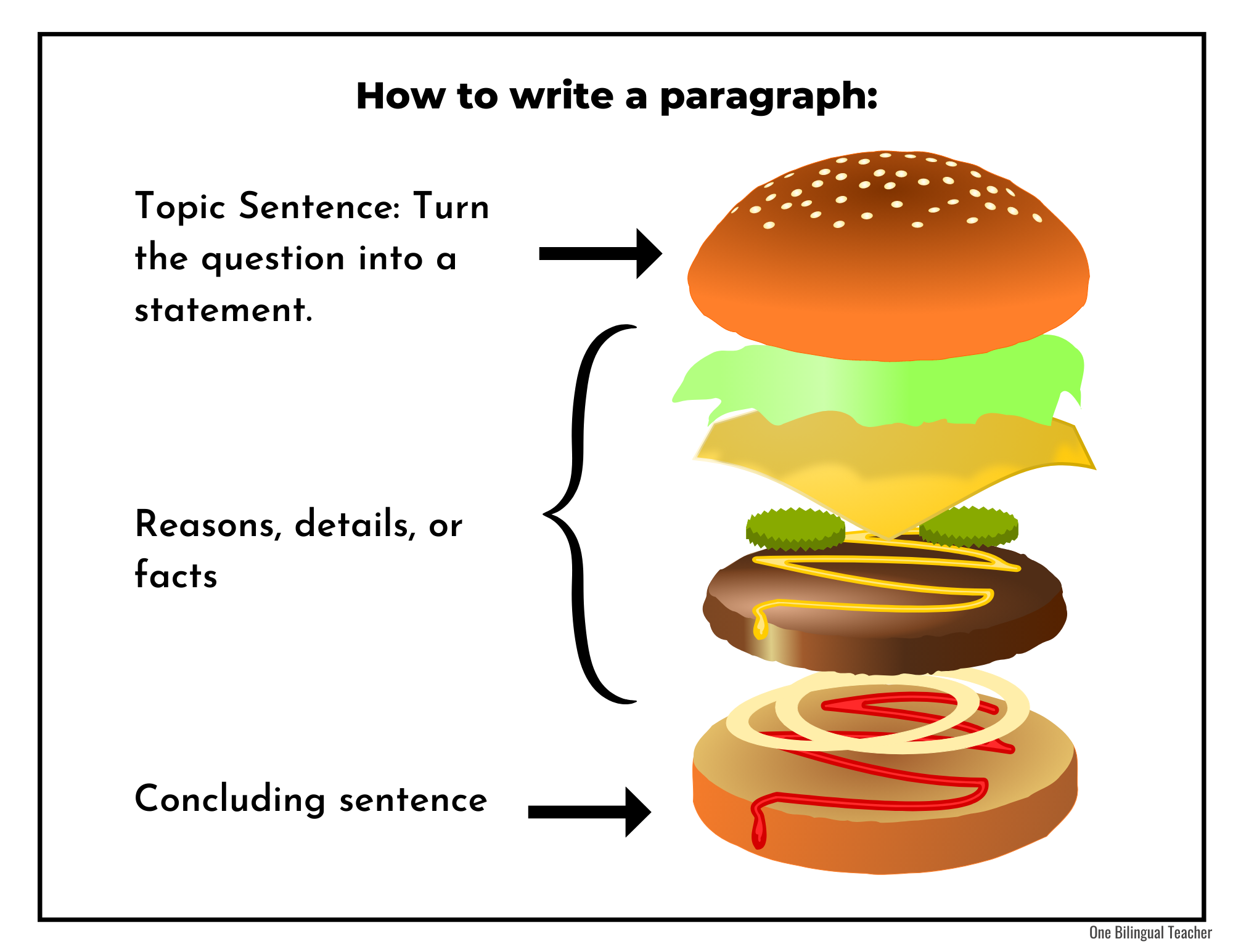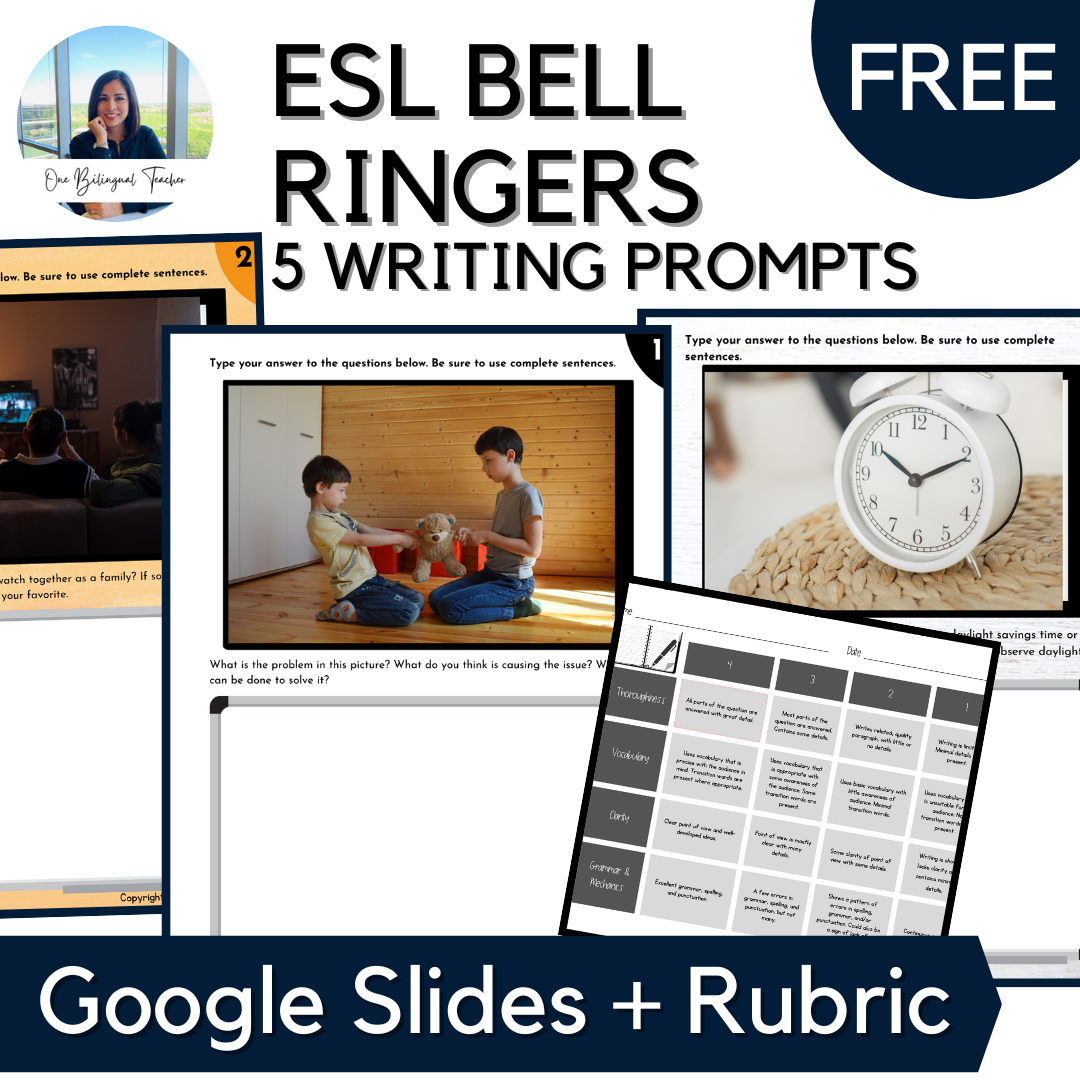Effective Paragraph Writing for ESL Students
So you have ESL learners in your class and they need you to teach them how to write essays. But what if your students have so many gaps, that you need to go back to some basic paragraph-writing? In this blog post, we'll be digging deep into teaching paragraph writing to our ESL students. Together, we'll explore practical tips and strategies that will make the process of paragraph writing a breeze for our ESL students.
Understanding the Basics: Building a Strong Foundation
First, you’ll need to make sure your students understand the building blocks of a paragraph. So, what exactly is a paragraph? It's like a tasty hamburger—it has a juicy topic sentence as the bun and mouthwatering supporting details as the filling. Yum!
Pre-Writing Activities: Sparking Ideas and Organizing Thoughts
Now that we've got our students craving hamburgers, let's help them generate ideas for their paragraphs. Hold brainstorming sessions and let their creativity flow. Model using a mind map to get your students thinking. Do one for yourself first while you think out loud. Then think of a topic that you all have knowledge about. Maybe a recent field trip or another common experience. Use that topic for a mind map you’ll create together. This will help them organize their thoughts, giving them a roadmap to navigate their way through paragraph writing.
Constructing a Coherent Paragraph: Putting Words on Paper
Now it’s time to put those thoughts onto paper. Start by modeling how to write a clear and concise topic sentence. It's like the superhero of the paragraph—it sets the tone and grabs the reader's attention. Then, model how to provide supporting details that are relevant and compelling. They can be facts, examples, or even personal experiences.
And let's not forget about the importance of transition words—they're the glue that holds the whole paragraph together. Last, of course, model how to write a concluding sentence, one that wraps up the whole idea.
Revise, Revise, Revise: Polishing Paragraphs
Nobody's perfect on the first try, right? It’s so hard for students to understand that the first draft is never enough. It’s even harder for them to see all the revisions that we as teachers or their peers suggest. Either way, model the importance of going back and fine-tuning their paragraphs.
Encourage them to help you read your paragraph and ask themselves, "Does it make sense? Is it clear?" Introduce peer editing activities. Let your students become editors for each other. Once they get over the denial phase, collaboration and feedback can work wonders!
Do It All Over Again
Once you’ve modeled each step, it’s their turn to write their paragraphs. Go step by step. Depending on the level of your students, have them complete their own mind maps, or work with panthers. You can even brainstorm topics together.
If your students are ready, share exciting and engaging writing prompts to spark their imaginations. Ask them to write a paragraph about a superhero who saves the day with a unique superpower or describe their dream vacation destination. And don't forget to sprinkle in some multimedia resources like videos or images. Maybe you can watch a video together and then summarize it. The possibilities are endless!
Ideas for Narratives
Write about a time when you faced a challenge and how you overcame it.
Imagine you could have any superpower for a day. What would it be, and how would you use it?
Describe your dream vacation destination and why you would love to visit it.
Write a letter to your future self, sharing your goals and aspirations.
If you could invent a new toy, what would it be and how would it work?
Describe a person who has had a significant impact on your life and explain why they are important to you.
Write a short story about a mysterious object you find in your backyard.
If you could be any animal, which one would you choose and why?
Describe a place that you find peaceful and why it brings you comfort.
Write about a memorable adventure or trip you took with your family or friends.
In a Nutshell
With these tips and strategies, you're well-equipped to guide your students toward paragraph-writing greatness. Remember, adaptability is key—tweak these methods to suit the needs of your students. Embrace their diversity, create a supportive environment, and watch their writing skills soar.
Remember, with a little patience, encouragement, and a dash of creativity, your ESL students will become confident writers. You might just inspire the next great novelist or influential journalist. Happy teaching, and remember to celebrate each and every paragraph triumph along the way!




